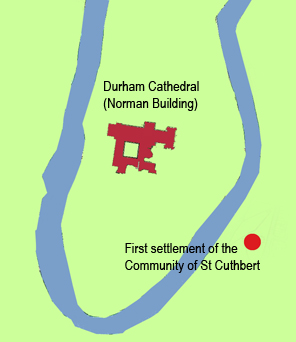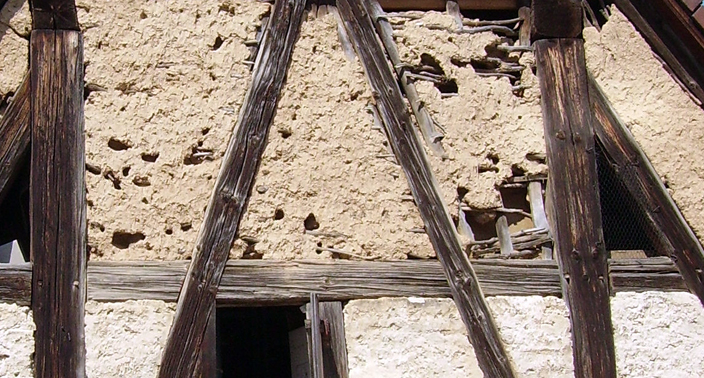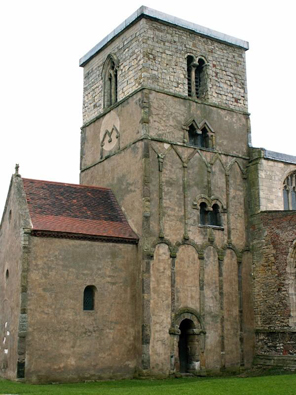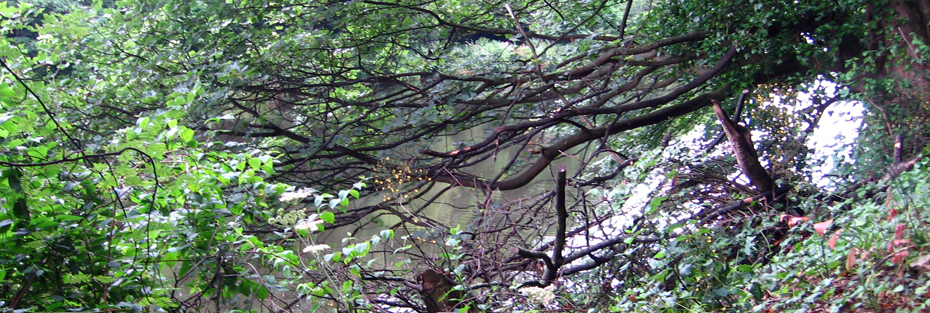The Early Days of the Community of St Cuthbert in Durham

A map showing the place where the community of St Cuthbert is thought to have first settled in Durham when they arrived in 995.
It is thought that the community of St Cuthbert first settled across the river from Durham Peninsula, at the spot today occupied by St Oswald’s Church.
A carved Anglo-Saxon stone cross buried in the church walls seems to indicate that this was the case.
The White Church
The first proper church constructed to house the body of Saint Cuthbert was the White Church or Alba Ecclesia, which was constructed of timber. It could have been a wattle and daub construction – named after the whitewash that would have covered its exterior.
It was probably conceived as a temporary structure as, in 998 (just three years after the community arrived), they consecrated a much larger church, the Ecclesia Major.

Detail of a building constructed using wattle and daub. The White Church was probably of similar construction.

The Anglo-Saxon Great Church may have looked something like this building, St Peter's Church in Barton Upon Humber. St Peter's probably dates from 970 (although the uppermost bit of the tower, with the two round arches, is later).
The Great Church (Ecclesia Major)
Consecrated in 998, this church was of stone. Uchtred, the earl of Northumbria, is reported to have used the local populace for its construction. This was not at all unusual – participating in the construction of a church was viewed as a pious act, and it was not difficult to enlist support.
Miracles performed at the shrine of St Cuthbert helped fuel people’s interest in the site, and quickly made Durham a place of great importance.

